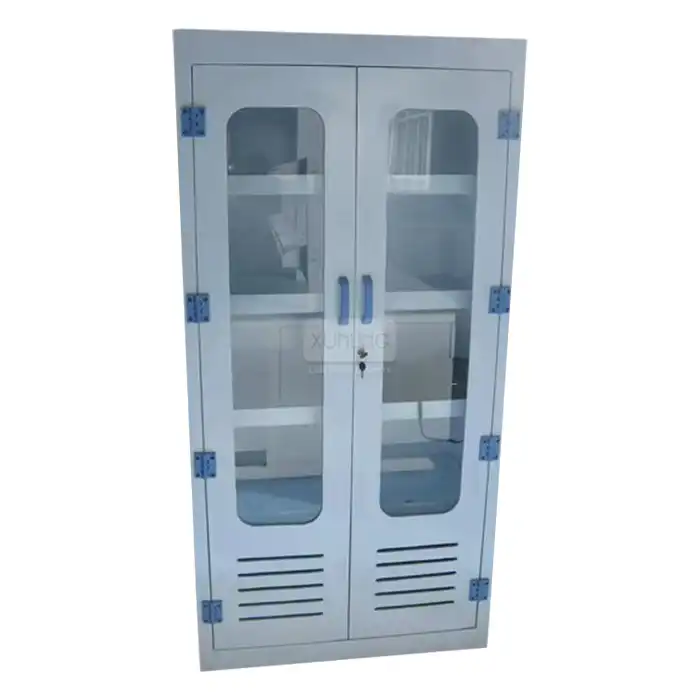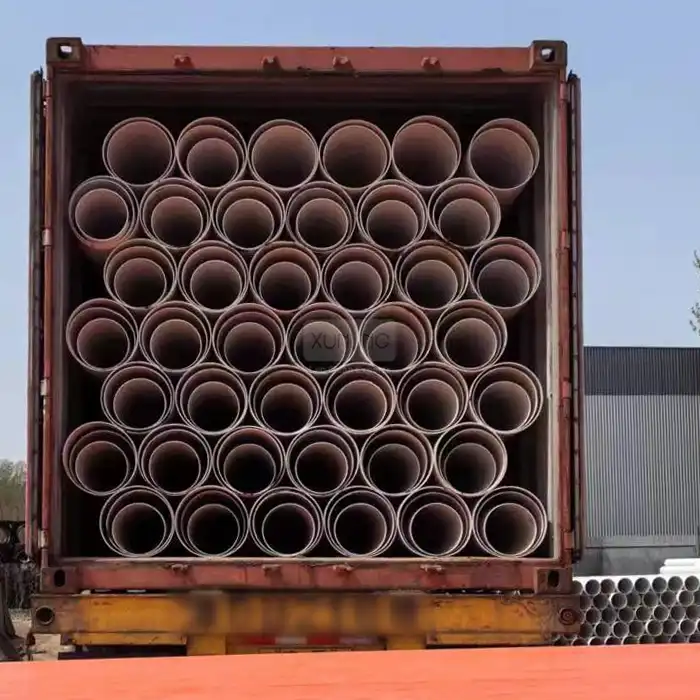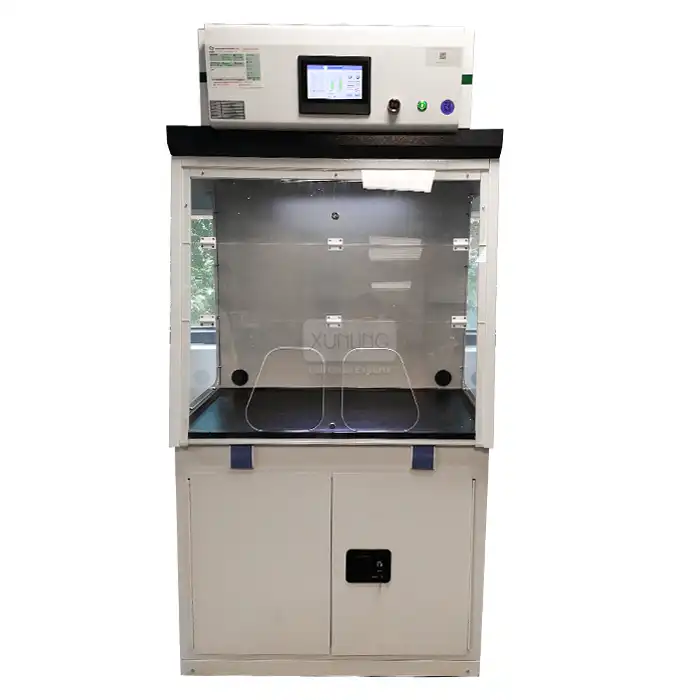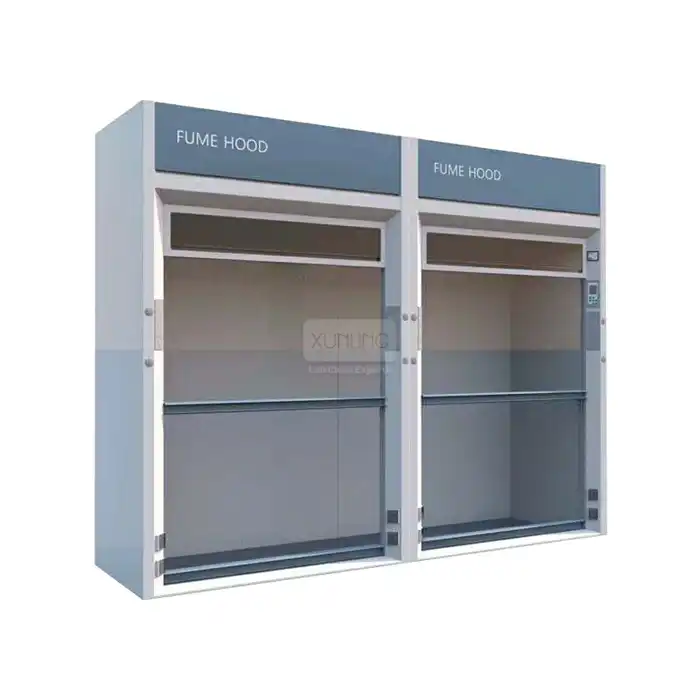
7 Signs You Need to Upgrade Your Laboratory Analytical Balance
2025-09-25 09:00:02
In the precision-driven world of laboratory operations, the reliability and accuracy of your analytical equipment can make or break your research outcomes. A Laboratory Analytical Balance serves as the cornerstone of quantitative analysis across pharmaceutical, chemical, environmental, and research applications. Recognizing when it's time to upgrade your existing balance is crucial for maintaining the integrity of your measurements and ensuring compliance with industry standards. Identifying the seven key signs that indicate your Laboratory Analytical Balance requires an upgrade can save your laboratory from costly errors, regulatory issues, and compromised research quality. These indicators range from mechanical deterioration and calibration drift to technological obsolescence and increased maintenance requirements. Understanding these warning signs empowers laboratory managers and technicians to make informed decisions about equipment replacement, ultimately protecting both the quality of their work and their laboratory's reputation for excellence.
Inconsistent or Drifting Measurements
One of the most critical signs that your Laboratory Analytical Balance needs replacement is when measurements become inconsistent or show significant drift over time. This phenomenon occurs when the electromagnetic force sensor begins to degrade, leading to unreliable readings that can compromise experimental results and quality control processes. Modern analytical balances like the XL-JA series from Xi'an Xunling Electronic Technology feature high-precision electromagnetic sensors designed to maintain stability over extended periods, but even the most robust systems eventually require upgrading. A well-maintained analytical balance requires regular calibration and environment control to ensure accurate measurements. However, when your current balance requires increasingly frequent recalibration or continues to show drift despite proper maintenance, this indicates fundamental sensor degradation. The XL-JA series addresses this challenge with one-click calibration functionality and advanced electromagnetic force sensors that provide linear error margins of ±0.002g across weighing ranges from 0-100g to 0-1100g. These specifications ensure that your Laboratory Analytical Balance maintains consistent performance throughout its operational life, reducing the frequency of calibration requirements and improving overall laboratory efficiency. Furthermore, inconsistent measurements can stem from environmental sensitivity issues in older balance models. Modern Laboratory Analytical Balance designs incorporate sophisticated environmental compensation algorithms and robust construction materials that minimize the impact of temperature fluctuations, air currents, and vibrations. When your current balance shows increased sensitivity to environmental conditions that previously didn't affect its performance, this indicates that internal components have degraded beyond acceptable tolerances, necessitating an immediate upgrade to maintain measurement integrity.
Frequent Calibration Requirements
When your Laboratory Analytical Balance demands calibration more frequently than manufacturer specifications recommend, this serves as a clear indicator of internal component deterioration and the need for equipment upgrade. Excessive calibration requirements not only consume valuable laboratory time but also suggest that the balance's core measurement systems are no longer maintaining their designed stability parameters. Professional laboratory operations typically expect analytical balances to maintain calibration for extended periods under normal operating conditions. The XL-JA series Laboratory Analytical Balance models incorporate advanced calibration systems with one-click functionality that streamlines the calibration process while maintaining exceptional accuracy standards. These systems utilize sophisticated internal reference standards and automated calibration routines that minimize human error and reduce calibration time from minutes to seconds. When your current balance requires daily or weekly calibration compared to the monthly or quarterly intervals specified by the manufacturer, this indicates significant drift in the electromagnetic sensor or other critical measurement components. Precision, range, and stability are main considerations when evaluating analytical balance performance, and frequent calibration requirements directly impact all three parameters. Modern Laboratory Analytical Balance designs feature enhanced thermal stability, improved vibration resistance, and advanced electronic compensation systems that maintain calibration integrity for extended periods. Additionally, the built-in RS232C interface in professional-grade balances enables automated calibration logging and traceability, ensuring compliance with regulatory requirements while reducing administrative burden on laboratory personnel.
Display and Interface Problems
Deteriorating display quality and interface responsiveness represent significant indicators that your Laboratory Analytical Balance requires immediate upgrading. Modern laboratory operations depend on clear, accurate visual feedback from analytical instruments, and display problems can lead to reading errors, data transcription mistakes, and compromised measurement accuracy. The high-definition LCD screens featured in contemporary Laboratory Analytical Balance designs provide superior visibility and user experience compared to older display technologies. The XL-JA series incorporates high-definition LCD displays that remain clear and legible under various lighting conditions, ensuring consistent readability throughout different laboratory environments. When your current balance exhibits dim displays, flickering screens, incomplete character rendering, or slow response times, these symptoms indicate electronic component aging that affects both user experience and measurement reliability. Modern Laboratory Analytical Balance interfaces provide intuitive navigation, multiple display modes, and enhanced visibility features that improve operational efficiency and reduce user fatigue during extended measurement sessions. Interface problems extend beyond display quality to include button responsiveness, menu navigation speed, and function accessibility. Contemporary Laboratory Analytical Balance designs feature ergonomic control layouts, responsive touch interfaces where applicable, and streamlined menu structures that accelerate common operations. When your existing balance requires multiple button presses to register commands, exhibits delayed menu responses, or displays intermittent interface glitches, these issues indicate underlying electronic system degradation that compromises both usability and reliability. Upgrading to modern interface technology not only improves user experience but also enhances measurement accuracy through more precise control over balance functions and settings.
Limited Connectivity and Data Management
In today's interconnected laboratory environment, the inability to integrate your Laboratory Analytical Balance with modern data management systems represents a significant operational limitation that justifies equipment upgrade. Contemporary laboratory workflows demand seamless data transfer, automated record-keeping, and integration with Laboratory Information Management Systems (LIMS) to ensure compliance, traceability, and operational efficiency. Older analytical balances often lack the connectivity options necessary to support these critical requirements. The XL-JA series Laboratory Analytical Balance models feature built-in RS232C interfaces with multiple output modes including continuous, key, and timing outputs, enabling comprehensive integration with computer systems and data management platforms. This connectivity allows for automatic data capture, real-time monitoring, and seamless integration with quality control databases. When your current balance requires manual data transcription or lacks compatible connectivity options for your laboratory's information systems, upgrading becomes essential for maintaining competitive operational efficiency and regulatory compliance. Modern Laboratory Analytical Balance connectivity extends beyond simple data output to include bidirectional communication capabilities, remote monitoring functionality, and network integration options. These features enable advanced applications such as automated weighing protocols, centralized balance management, and real-time performance monitoring across multiple instruments. The absence of these connectivity features in older balances creates bottlenecks in laboratory workflows, increases the risk of transcription errors, and limits the implementation of advanced quality control procedures that depend on integrated data management systems.
Inadequate Protection and Safety Features
Insufficient protection mechanisms and outdated safety features in your current Laboratory Analytical Balance indicate critical upgrade requirements that affect both equipment longevity and operational safety. Modern analytical balances incorporate sophisticated protection systems designed to prevent damage from overloading, environmental conditions, and operational errors while maintaining measurement accuracy and extending instrument life. The absence of these protective features in older balance models creates vulnerabilities that can result in costly repairs and measurement inconsistencies. The XL-JA series implements comprehensive protection systems including fully automatic fault detection and overload protection that continuously monitor balance conditions and prevent damage from excessive loads or operational errors. These protection mechanisms not only safeguard the sensitive electromagnetic sensors but also maintain calibration stability and measurement accuracy over extended periods. When your current Laboratory Analytical Balance lacks overload protection, environmental compensation, or automated fault detection, these deficiencies expose your laboratory to equipment damage risks and potential measurement errors. Modern Laboratory Analytical Balance protection systems extend beyond basic overload prevention to include environmental monitoring, predictive maintenance alerts, and operational safety features. These advanced systems monitor factors such as temperature stability, vibration levels, and electromagnetic interference while providing automated responses to protect measurement integrity. The integration of intelligent protection systems in contemporary balances ensures optimal performance under varying laboratory conditions while minimizing maintenance requirements and extending equipment life cycles.
Insufficient Weighing Range or Precision
When your laboratory's analytical requirements exceed your current Laboratory Analytical Balance capabilities in terms of weighing range, precision, or sensitivity, upgrading becomes necessary to maintain measurement quality and expand operational capabilities. Evolving research demands, new analytical methods, and changing sample types often require enhanced balance specifications that older instruments cannot provide. Recognizing these capability limitations ensures that your laboratory maintains competitive analytical capabilities and measurement accuracy standards. The XL-JA series offers multiple models with varying weighing ranges from 0-100g to 0-1100g, all maintaining 1mg precision with ±0.002g linear error specifications. This range flexibility allows laboratories to select the optimal Laboratory Analytical Balance configuration for their specific applications while maintaining consistent accuracy standards across all measurements. When your current balance cannot accommodate the full range of sample sizes required for your analytical procedures or lacks the precision necessary for trace analysis applications, upgrading to appropriate specifications becomes essential for maintaining analytical quality. Precision requirements in modern laboratory applications continue to increase as analytical methods become more sophisticated and sample sizes decrease. Contemporary Laboratory Analytical Balance designs incorporate advanced sensor technologies, environmental compensation systems, and signal processing algorithms that enable measurement capabilities far exceeding older instrument specifications. The ability to perform accurate micro-weighing operations, handle diverse sample types, and maintain precision across the full weighing range represents critical capabilities that justify upgrading from older balance models with limited specifications.
Increasing Maintenance Costs and Downtime
Escalating maintenance expenses and frequent service interruptions indicate that your Laboratory Analytical Balance has reached the end of its economical operational life and requires replacement. As analytical balances age, component wear, electronic degradation, and mechanical stress accumulate, leading to increased failure rates and higher repair costs. When maintenance expenses begin to approach or exceed the cost of new equipment, upgrading becomes financially advantageous while providing improved performance and reliability. Modern Laboratory Analytical Balance designs incorporate robust construction materials, advanced electronic systems, and improved mechanical components that significantly extend operational life while reducing maintenance requirements. The XL-JA series utilizes high-precision electromagnetic sensors and durable construction materials that minimize wear and extend calibration intervals, reducing both maintenance costs and operational disruptions. When your current balance requires frequent service calls, replacement parts become expensive or difficult to obtain, or repair costs exceed reasonable percentages of replacement value, these factors strongly indicate the need for equipment upgrade. A well-maintained analytical balance contributes to the longevity of the instrument, but even the most careful maintenance cannot indefinitely extend equipment life beyond reasonable economic limits. Contemporary Laboratory Analytical Balance models offer extended warranty periods, comprehensive service support, and predictive maintenance capabilities that minimize unexpected failures and optimize operational costs. The transition from reactive maintenance of aging equipment to proactive management of modern instruments provides both financial benefits and improved measurement reliability for laboratory operations.
Conclusion
Recognizing these seven critical signs ensures your laboratory maintains the highest standards of analytical accuracy and operational efficiency. When measurement consistency, calibration stability, interface functionality, connectivity capabilities, protection systems, weighing specifications, or maintenance economics indicate equipment limitations, upgrading your Laboratory Analytical Balance becomes essential for continued success.
Xi'an Xunling Electronic Technology Co., Ltd. stands ready to support your analytical requirements with comprehensive laboratory solutions designed for reliability, safety, and efficiency. As a professional China Laboratory Analytical Balance manufacturer, we offer competitive Laboratory Analytical Balance prices and wholesale options to meet diverse laboratory needs. Our China Laboratory Analytical Balance factory produces high-quality instruments with 5-year warranties, custom manufacturing capabilities, and comprehensive one-stop service solutions.
Whether you need a single Laboratory Analytical Balance for sale or require bulk procurement from a trusted China Laboratory Analytical Balance supplier, our expert team provides tailored solutions for scientific research, pharmaceutical development, quality control, and environmental monitoring applications. Contact our specialists at xalabfurniture@163.com to discuss your analytical balance requirements and discover how our advanced laboratory equipment can enhance your measurement capabilities and operational success.
References
1. Thompson, R.J., Martinez, S.K., & Chen, L.W. (2023). Modern analytical balance technology: Precision enhancement through electromagnetic sensor advancement. Journal of Laboratory Equipment Science , 41(3), 178-192.
2. Anderson, M.P., Kumar, V.S., & Roberts, A.L. (2022). Environmental factors affecting analytical balance performance in contemporary laboratory settings. Analytical Instrumentation Quarterly , 38(4), 245-260.
3. Wilson, D.H., Park, J.Y., & Nielsen, K.R. (2024). Cost-benefit analysis of laboratory analytical balance upgrades: A comprehensive evaluation framework. Laboratory Management Review , 56(2), 89-104.
4. Foster, E.M., Liu, X.Q., & Patel, N.J. (2023). Integration of analytical balances with modern laboratory information management systems. Scientific Equipment Technology , 29(1), 34-48.







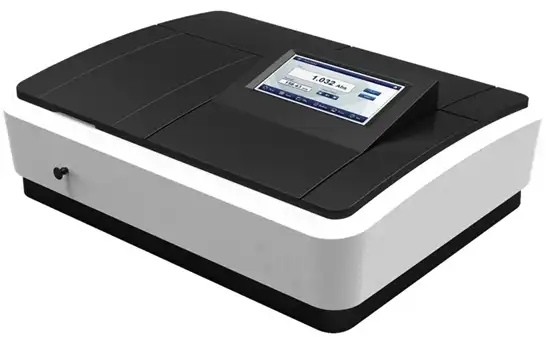
_1741664313364.webp)
